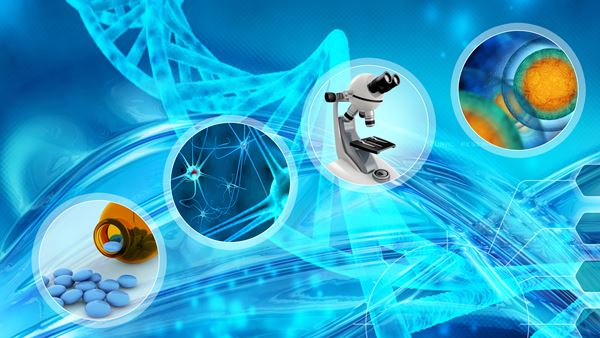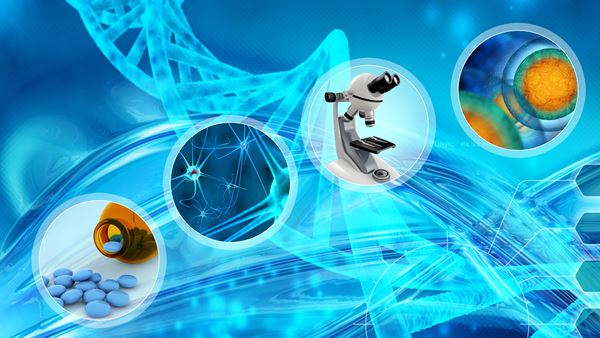
Stem cell research continues to move at a very rapid pace, with important new discoveries occurring every few months. The stem cells found in umbilical cord blood may soon be used to treat diseases and injuries that the medical community thought were untreatable — spinal injuries, Alzheimer’s disease, blindness and brain injuries to name a few. Some researchers even believe we will be able to regrow human limbs within the next decade.
But where did these incredible medical breakthroughs come from? Here is a brief history of cord blood stem cells and some of the latest stem cell breakthroughs.
The Discovery of Stem Cells
In 1908, a Russian histologist named Alexander Maksimov coined the term “stem cells” to describe microscopic cells capable of producing red blood cells. Dr Maksimov had already theorised the existence of haematopoietic stem cells, which are found in umbilical cord blood and play an important role in the treatment of nearly 80 diseases today.
In 1963, scientists discovered hematopoietic stem cells (HSCs) in the bone marrow of mice. By 1968, doctors had realised the potential of HSCs and were performing bone marrow transplants to treat people with cancer and blood disorders. In the following decades, the amount of research into stem cells rapidly increased. Scientists discovered other types of stem cells including multipotent stem cells and pluripotent stem cells — which are capable of transforming into multiple types of cells.
Stem Cells Discovered in Cord Blood
Researchers first discovered the presence of stem cells and progenitor cells in human cord blood in 1974. This discovery meant that a new, non-invasive source of stem cells was now available for research.
In 1982, during a private meeting between Dr Hal Broxmeyer, Edward A. Boyse and Judith Bard, Boyse mentioned the waste of discarding the valuable stem cells found in umbilical cord blood. Dr Broxmeyer suggested that umbilical cord blood could be used as a source of transplantable hematopoietic stem (HSC) and progenitor (HPC) cells (Ballen, Gluckman & Broxmeyer, 2013). That meeting later led to the creation of the world’s first umbilical cord blood company, Biocyte.
That meeting later led to the research paper Human umbilical cord blood as a potential source of transplantable hematopoietic stem/progenitor cells in 1989 (H E Broxmeyer, 1989). This ground-breaking paper demonstrated that cord blood has similar attributes to bone marrow and it is a viable source of stem cells for transplantation.
The First Cord Blood Transplant
The first successful cord blood transplant occurred in 1988, when a young boy with Fanconi Anaemia received stem cells from his sister’s umbilical cord blood (Gluckman & Rocha, 2005). His sister was HLA-identical (a 100% match) but not affected by the Fanconi mutation.
The transplant was a success and the patient is alive and well today — free of the disease, with full haematological and immune system function. The research work of Dr Broxmeyer and Dr Boyse which identified the potential of cord blood stem cells was crucial to making the transplant possible.
The world’s first public umbilical cord bank was established in 1992 in New York by Dr. Pablo Rubinstein at the New York Blood Center. Funding for the bank was provided by the National Heart, Lung and Blood Institute (NHLBI) of the National Institutes of Health (NIH).
In 1993, the world’s first cord blood transplant between unrelated people took place. It was performed by Dr. Joanne Kurtzberg at Duke University’s Paediatric Blood and Marrow Program. The transplant was a part of a research project which involved twenty-five separate allogenic transplants.
In 1996, the United State’s Food and Drug Administration’s (FDA) Investigational New Drug program began investigating umbilical cord blood. The NIH/National Heart Lung and Blood Institute (NHLB) also sponsored the Cord Blood Transplantation Study (COBLT).
The next major stem cell breakthrough came in 1997, when an NEJM study showed that using umbilical cord blood stem cells resulted in higher survival rates for some conditions (Gluckman et al., 1998).
In the years that followed, public institutions around the world began to save umbilical cord blood. By 1998, the United State’s National Marrow Donor Program launched a cord blood program, aimed at matching donors with recipients. In the same year, Keonne Penne became the first person in the world to be cured of sickle cell disease, thanks to umbilical cord blood stem cells.
In 2003, Dr Broxmeyer published a paper showing that umbilical cord blood remains viable after being cryogenically frozen for 15 years. In the United States the FDA began developing guidelines for the storage of umbilical cord blood.
In 2004 researchers confirm that pluripotent stem cells found within cord blood may be used to create other types of cells. These cells may be used to treat a whole new range of diseases and injuries. This was a huge breakthrough in the field of regenerative medicine and the history of cord blood stem cells.
By 2009 more than 20,000 cord blood transplants had taken place worldwide. There were 400,000 cord blood units stored (Gluckman, 2009) and more than 450 cord blood banks operating (Bioinformant, 2017). By the end of 2012 more than 35,000 cord blood transplants had taken place worldwide (Aldenhoven & Kurtzberg, 2015).
The Future of Umbilical Cord Blood Stem Cells
Even though it seems like the history of cord blood stem cells has moved at a rapid pace so far, it is only getting faster. Since the discovery of multipotent stem cells within cord blood, research into potential new treatments has accelerated. Some of the diseases and injuries which stem cells may be used to treat include:
- Blindness and macular degeneration
- Heart muscle damage
- Brain injuries and diseases including Alzheimer’s disease and Parkinson’s disease.
- Spinal cord injuries
- Regrowth of organs, skin, ligaments, muscle and limbs
- Anti-ageing treatments
Some of the incredible stem cell breakthroughs this year included:
Scientists used stem cells to determine the origin of heart defects
Scientists from Standard University have used induced pluripotent stem cells to grow heart cells and find out why some babies suffer from ventricular non-compaction (LVNC), a life-threatening heart defect.
A new approach to make more stem cells from cord blood
Canadian scientists developed a new method for growing more stem cells from a cord blood sample. This breakthrough will help doctors grow more stem cells for transplants.
Incredible new cataract surgery using stem cells
Scientists from China and the USA worked together to develop a new form of surgery that uses stem cells to treat cataracts.
Experimental stem cell therapy restore paralysed man’s movement
A new trial being run at the Keck Medical Center of the University of Southern California (USC) indicates that stem cells may be able to restore some movement for people with traumatic spinal injuries.
Researchers may have discovered a diabetes treatment using stem cells
Scientists from the Washington University School of Medicine and Harvard University may have found a new stem cell treatment that cures diabetes. The treatment will enter human trials shortly.
Cord blood stem cells reduce chronic graft-versus-host disease incidence
Chinese scientists discovered that cord blood stem cels had a lower risk of cGVHD compared to other types of stem cells.
Umbilical cord blood can speed up stroke recovery
A new study has found that stem cells may be able to reduce the recovery time of patients after an ischaemic stroke.
Scientists building a full-sized human heart
Researchers from Massachusetts General Hospital and Harvard Medical School have developed an incredible new technique to build a full-size human heart from stem cells.
Stem cells may be able to repair brittle bones
A research team from Ottawa has discovered that mesenchymal stem cells (MSCs) can be used to repair bone damage caused by osteoarthritis.
Researchers use stem cells to create hair
Scientists have found a potential cure for baldness, using stem cells. The treatment will go into the next stage of trials this year.
Researchers expect the coming year to include many incredible new stem cell breakthroughs!
Sources:
Ballen, K., Gluckman, E., & Broxmeyer, H. (2013). Umbilical cord blood transplantation: the first 25 years and beyond. Blood, 122(4), 491-498. doi:10.1182/blood-2013-02-453175
Gluckman, E. (2009). History of cord blood transplantation. Bone Marrow Transplantation, 44(10), 621-626. doi:10.1038/bmt.2009.280
Gluckman, E., & Rocha, V. (2005). History of the clinical use of umbilical cord blood hematopoietic cells. Cytotherapy, 7(3), 219-227. doi:10.1080/14653240510027136
H E Broxmeyer, E. (1989). Human umbilical cord blood as a potential source of transplantable hematopoietic stem/progenitor cells. Proceedings Of The National Academy Of Sciences Of The United States Of America, 86(10), 3828. Retrieved from ncbi.nlm.nih.gov/pmc/articles/PMC287234/
Gluckman, E., Rocha, V., Boyer-Chammard, A., Locatelli, F., Arcese, W., & Pasquini, R. et al. (1998). Outcome of Cord-Blood Transplantation From Related and Unrelated Donors. Obstetrical & Gynecological Survey, 53(1), 19-20. http://dx.doi.org/10.1097/00006254-199801000-00011
Aldenhoven, M. & Kurtzberg, J. (2015). Cord blood is the optimal graft source for the treatment of pediatric patients with lysosomal storage diseases: clinical outcomes and future directions. Cytotherapy, 17(6), 765-774. http://dx.doi.org/10.1016/j.jcyt.2015.03.609
Bioinformant (2017). Global Cord Blood Industry Database 2015-16. Retrieved 31 January 2017, from https://www.bioinformant.com/product/global-cord-blood-industry-database/


